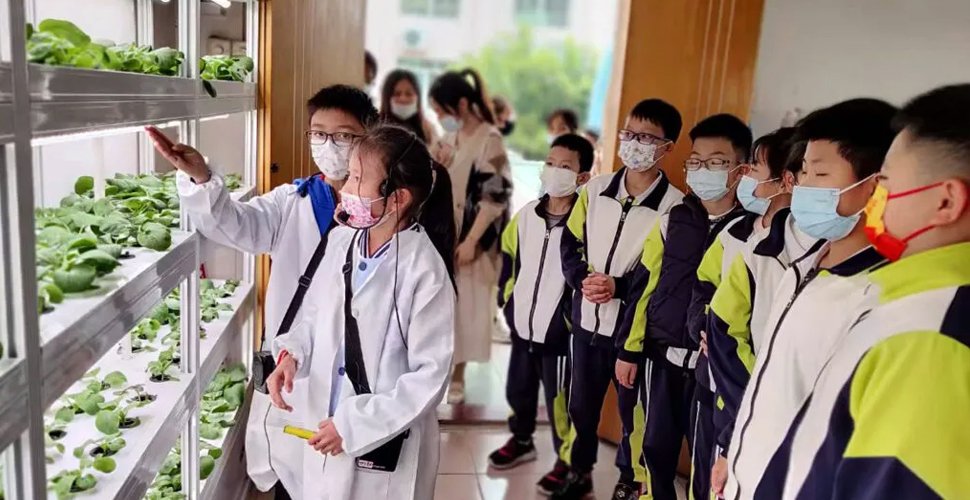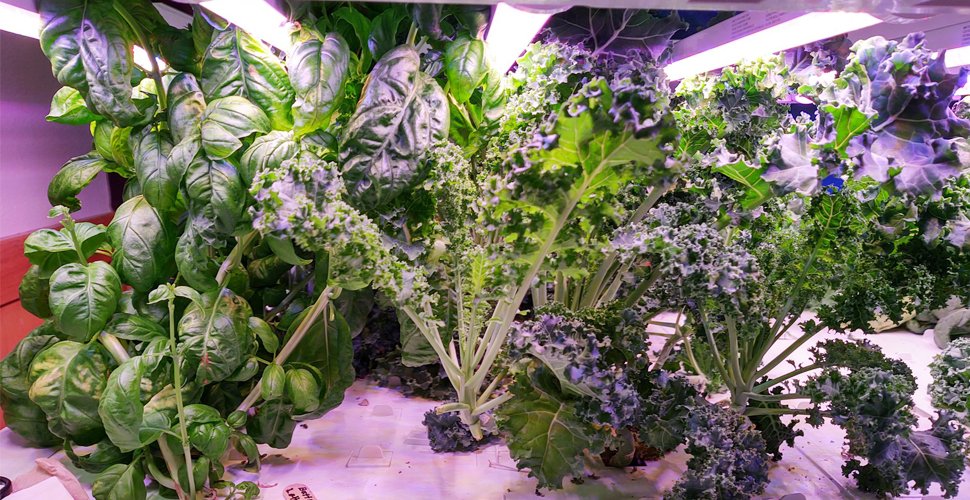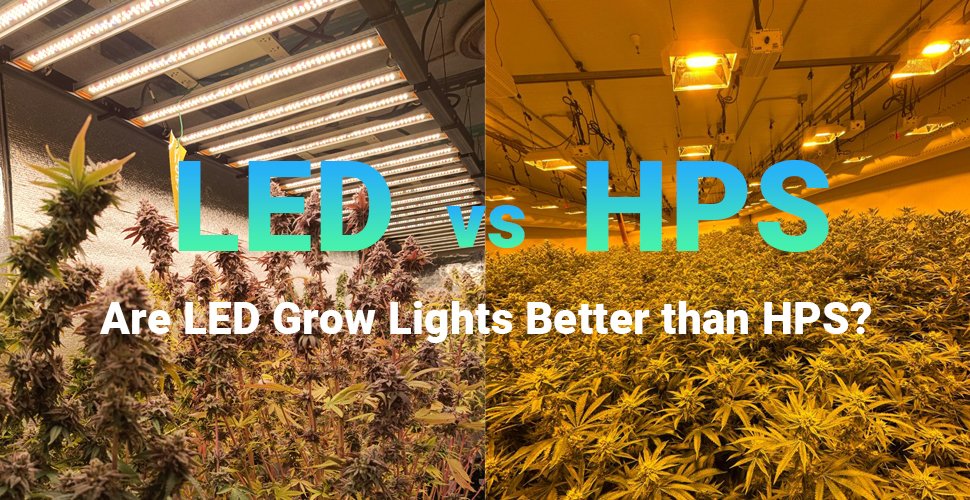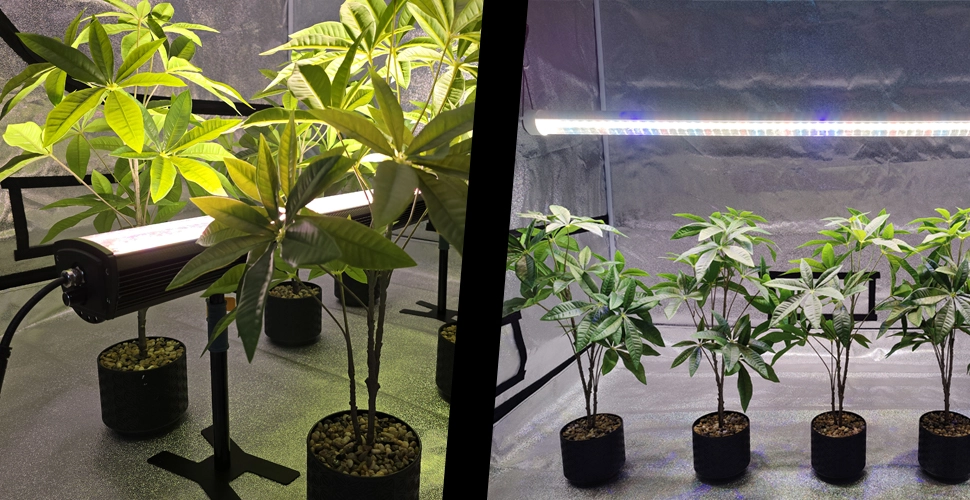Tabla de contenido
Todos reconocemos los beneficios de los jardines escolares, que tienen un excelente valor educativo para todos los involucrados. Puede impactar positivamente a los estudiantes y campus, la salud física y mental de los estudiantes e incluso todo el sistema de educación regional de muchas maneras. Y El sistema de hidroponía de aula emergente es un producto candente En los campus y en los hogares, a medida que la hidroponía está cambiando la forma en que el mundo piensa sobre la producción de alimentos.
Un huerto hidropónico es tan solés y se basa en soluciones de agua y nutrientes. Esto los hace ideales para las escuelas donde el invierno o el clima lluvioso evitan la siembra al aire libre. También es adecuado para escuelas o instituciones educativas que no tienen una gran pieza de tierra para establecer un jardín al aire libre.
Los sistemas hidropónicos controlados por el clima hacen posible la producción y la educación de los alimentos en cualquier época del año, en cualquier condición climática. Y Su eficiencia y capacidad de control precisa lo convierten en una excelente herramienta para la integración con la educación del campus, especialmente en la educación STEM (ciencia, tecnología, ingeniería y matemáticas).
Si usted es un maestro de decisiones de la institución educativa o un maestro de escuela, creo que debe estar interesado en un sistema de hidroponía educativa de laboratorio de plantas práctico que requiere aprender sobre STEM.
Ven y aprende por qué el sistema de hidroponía en el aula es una herramienta de enseñanza tan poderosa.
Impacto de la jardinería escolar en el aprendizaje
Los maestros de los Estados Unidos están Involucrar a los estudiantes en Ed Handsed Based ProjectsUcation a través de la hidroponía. Ciertas escuelas en China también se están involucrando.
¿Por qué todos están haciendo programas de educación hidroponía?
Por un lado, incluso una riqueza de conocimiento teórico obtenido de los libros no es rival para la verdad obtenida a través de la práctica práctica. Como educadores, es importante comprender qué deben invertir los estudiantes en su aprendizaje. También es necesario pensar en qué nuevos programas se pueden desarrollar para involucrar a los estudiantes en la exploración de aprendizaje.
Se ha demostrado que la capacitación hidroponica, por otro lado, tiene muchos efectos positivos en los estudiantes.’ salud física y mental.

Involucre a los estudiantes con proyectos de educación STEM práctica
El éxito de nuestra economía y el futuro de nuestros estudiantes depende de la comprensión de los conceptos STEM. El empleo en los campos STEM continúa creciendo cada año a medida que aumenta la demanda de habilidades especializadas.
Esto significa que fomentar el amor por STEM a una edad temprana puede inspirar a los estudiantes a seguir carreras en los campos STEM. Si sus alumnos disfrutan de aprender estándares STEM a través de proyectos, les encantará cuando presente un proyecto de hidroponía para los estudiantes.
Hydroponics Classroom proporciona una gran plataforma para conceptos y habilidades STEM que van desde ciencias e ingeniería hasta matemáticas hasta artes del lenguaje y estudios sociales.
Los estudiantes también tienen el desafío de construir sus propios dispositivos hidropónicos y optimizar sus sistemas educativos de hidroponía para ayudarlos a desarrollar habilidades de pensamiento crítico y habilidades de resolución de problemas. Sentarán un sentido único de propiedad y orgullo al cultivar sus propias plantas.
Los maestros nos dijeron que sus alumnos lo pasaron muy bien.

Enseñar una amplia gama de temas
- Los proyectos escolares de la hidroponía se pueden utilizar para enseñar conceptos esenciales en la educación STEM. Los estudiantes pueden aprender sobre la química de las soluciones de nutrientes, la física de la iluminación y el movimiento del agua, y la biología del crecimiento y desarrollo de las plantas.
- El sistema hidropónico para las escuelas requiere que los estudiantes controlen la temperatura, controlen el pH y el contenido de nutrientes de la solución de nutrientes y los horarios de luz para mejorar la producción de plantas. Esto también ofrece muchas oportunidades de aprendizaje para las matemáticas y la química, así como el pensamiento crítico y el trabajo en equipo.
- La jardinería en el aula también se puede utilizar para enseñar a los estudiantes sobre la sostenibilidad y la importancia de reducir los desechos y conservar los recursos, motivándolos a proteger nuestro planeta favorito.
- La horticultura requiere que los estudiantes usen habilidades de pensamiento crítico para resolver problemas y tomar decisiones. También aprenden conceptos de ciencias, matemáticas y artes del lenguaje, como la medición, la biología vegetal y el vocabulario relacionados con las plantas.
El Sistema de hidroponía en el aula Ofrece un enfoque práctico que se puede enseñar sobre varios temas. También se puede utilizar para abordar los problemas de ingeniería, ecología, negocios y marketing, además del contenido de ciencia, agricultura y nutrición. Los estudiantes incluso pueden trabajar en habilidades blandas importantes mientras co-cultivan.
¡Y lo más importante, incorpora más contenido basado en el enfoque de su programa de estudio!
Proporcionar oportunidades atractivas para practicar habilidades blandas
Para los estudiantes de actualización de hoy en el proceso e interconectados, interactuar y usar la tecnología para colaborar y crear es una segunda naturaleza. Hydroponics es una excelente manera de guiar a los estudiantes a trabajar en las habilidades blandas necesarias en cualquier trabajo.
En el aula, trabaje con los estudiantes para explorar y observar todo el ciclo de vida de una planta, desde la semilla hasta la cosecha de productos deliciosos. Pueden perfeccionar la comunicación, el trabajo en equipo y las habilidades de pensamiento crítico a medida que resuelven problemas y miden el éxito.
La colaboración, el trabajo en equipo, el pensamiento crítico y las habilidades blandas usarán cuando trabajen juntos para cultivar alimentos son infinitas.
La jardinería hidropónica en las escuelas proporciona una experiencia interactiva que no solo involucra a los estudiantes de hoy, sino que también les permite conectarse con el plan de estudios y comprender la relevancia de cada componente de aprendizaje a escala global.
Cultive frutas y verduras durante todo el año
Muchos estudiantes’ Primera reacción al escuchar sobre kits de hidroponía de aula tan oillones, es genial!
No solo es genial, sino que también se convierte en la solución perfecta para las escuelas en áreas frías de invierno. Es posible que no pueda cultivar plantas afuera en la nieve, pero su equipo hidropónico mantendrá sus plantas de interior perfectamente felices.
Debido a la controlabilidad superior de la hidroponía, la hidroponía escolar se puede utilizar para la producción y educación de alimentos en cualquier época del año y en cualquier condición climática.
En comparación con los jardines tradicionales al aire libre, el sistema de hidroponía en el aula utiliza espacio vertical, lo que permite que se cultiven más plantas en un espacio más pequeño. Por ejemplo, El jardín de aula interior de una escuela de quinto grado puede crecer hasta 208 plantas – la misma cantidad de alimentos producidos por cuatro camas de jardín promedio.
También es importante tener en cuenta que las plantas hidropónicas crecen hasta dos veces más rápido que las cultivadas en el suelo. Esto significa que puede cultivar más plantas, obtener más productos y vender más productos en los agricultores de su escuela.’ mercado.

Crear oportunidades de colaboración interdepartamental
Un gran beneficio de plantar en el aula es la oportunidad de colaboración interdepartamental. Los maestros de agricultura, los maestros de ciencias, los maestros culinarios y los trabajadores del servicio de alimentos pueden colaborar en función de conceptos como la agricultura sostenible y los programas de granja a escuela.
Al conectar cursos con los que los estudiantes pueden estar luchando, se pueden ver nuevas ideas en la acción y los conceptos se pueden entender de una manera que los hace más fácilmente aceptados.
Los instructores de cocina lideran clases de cocina atractivas donde los estudiantes pueden encontrar placer en los colores y formas de recetas de frutas y verduras. ¡A menudo llegan a casa pidiendo nuevos alimentos que han probado en la escuela! Muchos estudiantes han expresado su deseo de tener un sistema hidroponicia en el aula como este en el hogar e impulsar a sus familias a participar en él.
Los proyectos de la escuela agrícola hidropónica se pueden integrar en todos los niveles de grado, y puede crear una experiencia de aprendizaje perfecta para estudiantes de jardín de infantes hasta quinto grado. Imagine lo genial que sería para los estudiantes comenzar su educación STEM a una edad temprana, además de construir ese conocimiento cada año.
Beneficios de la jardinería escolar para los estudiantes
Se ha demostrado que los jardines de aprendizaje tienen muchos efectos positivos en los estudiantes.’ cuerpos y mentes. ¿Sabías? Cuando coseches frutas y verduras con ellas, serás el maestro que siempre recordarán.
- Mejorar la salud física. Los estudiantes están involucrados en la creación de equipos, semillas, plantación y cosecha, lo que ayuda a desarrollar sus habilidades motoras y coordinación. Algunas escuelas establecen jardines al aire libre hidroponics, que también los alientan a pasar más tiempo afuera en el aire fresco.
- Aumentar la conciencia ambiental. La siembra en el aula les permite aprender sobre el mundo natural. Observe el crecimiento y el ciclo de vida de las plantas y animales para obtener una comprensión y apreciación más profunda del mundo que los rodea.
- Mejorar la curación mentalh. La investigación muestra que pasar el tiempo en la naturaleza puede reducir los niveles de estrés y ansiedad, y mejorar la salud mental general. La jardinería proporciona una sensación de logro y propósito y puede mejorar la autoestima y la confianza.
- Nutrición mejorada. El jardín de aprendizaje brinda a los estudiantes la oportunidad de aprender y probar nuevas frutas y verduras. Esto puede ayudarlos a desarrollar hábitos alimenticios saludables y tomar decisiones de alimentos más informadas.
- Mejorar las habilidades de aprendizaje. La jardinería orgánica interior requiere que los estudiantes usen habilidades de pensamiento crítico para resolver problemas y tomar decisiones. También aprenden conceptos de ciencias, matemáticas y artes del lenguaje, como la medición, la biología vegetal y el vocabulario relacionados con las plantas.
¿Es escalable el sistema de hidroponía en el aula?
Los estudiantes necesitan hidroponía y los estudiantes de beneficios de hidroponía.
Creemos que el Proyecto Hydroponics para los estudiantes puede ser un programa sostenible y replicable con las herramientas, el apoyo y los educadores dedicados adecuados..
Si bien se dice que las ideas de jardín de aula interior no son obligatorias en las escuelas, todavía queda un largo camino por recorrer. Con suerte, los educadores que se atreven a ser innovadores y tienen una visión a largo plazo pueden moverse en la dirección correcta para promover la educación y la conexión mágica con la naturaleza.
Seguimos Busque más socios interesados para trabajar con nosotros para que más estudiantes puedan aprender sobre la agricultura STEM y urbana a través del sistema de hidroponía en el aula. Póngase en contacto con nosotros aquí.
jayes
Como gerente de marketing digital en AUXGROW, Jayes combina la pasión por los sistemas hidropónicos y la experiencia en luces de cultivo LED. Con experiencia práctica y un profundo conocimiento, Jayes le guía a través del mundo del cultivo sostenible.






